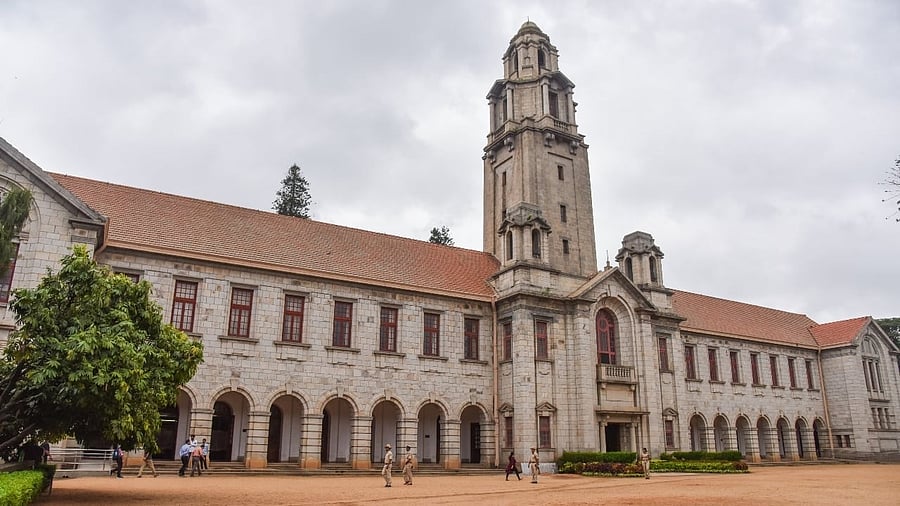
IISc Bengaluru.
Credit: DH File Photo
Bengaluru: Insectivorous birds in the understorey of the Eastern Himalayas face threats from habitat degradation, a study by the Indian Institute of Science (IISc) has found.
Researchers at the Centre for Ecological Sciences (CES) examined how forest microclimate changes after selective logging affect wild bird survival in the Eagle Nest Wildlife Sanctuary, Arunachal Pradesh, over 10 years (2011–2021).
The team tagged birds with lightweight aluminum rings and revisited sites annually to track survival and changes in body mass. They paired this data with temperature-humidity loggers in both primary and logged forests to estimate how understorey insectivorous birds — those below the canopy — adapt to microclimatic changes.
"Using these long-term datasets, we can better understand why some species survive after logging, while others decline,” says Akshay Bharadwaj, former Master of Science student at CES and corresponding author.
Overall, the team found logged forests are consistently hotter and drier by day, colder at night than primary forests, exposing birds to stressful fluctuations from canopy loss. Scientists say these conditions could worsen with climate change, especially in the Eastern Himalayas, where birds are thermal specialists adapted to stable climates.
Their findings show these birds, which use different microclimatic niches in primary and logged forests, are most affected in logged forests — experiencing loss in body mass and steep declines in long-term survival. "Species that can still find microclimates in logged forests similar to their original homes are surviving after selective logging. Those that cannot match old conditions face steep declines,” adds Bharadwaj.
"Being in the field studying these animals is a thrill. We work in a remote part of Arunachal Pradesh, collecting data under challenging conditions — rain, leeches, and elephants,” says co-author Umesh Srinivasan, Assistant Professor at CES.
The researchers suggest conservation strategies should prioritise preserving primary forest across elevational gradients.
“In degraded areas, we can consider microclimatic remediation, such as creating shade covers or supplementing water sources to mimic original microhabitats for vulnerable species,” explains Bharadwaj. “Forest degradation can affect food chains within larger ecosystem processes.” A drop in insectivorous birds may increase insect numbers, affecting ecological stability, he adds.
The study highlights the need to understand why some bird species decline after logging and how microclimatic niches in disturbed habitats influence population dynamics. “Long-term datasets are crucial, and we continue to collect data to plan effective conservation measures for these species,” explains Srinivasan.
